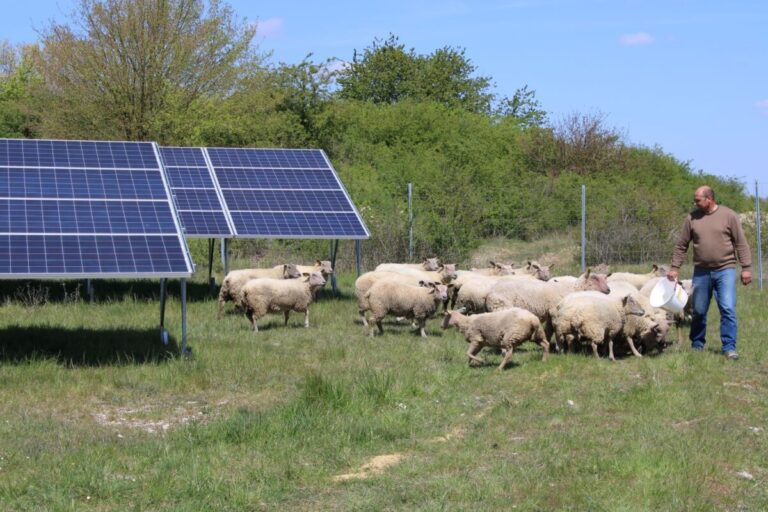SolarPower Europe has released an agrivoltaic energy handbook, describing agricultural sector archetypes, business cases, agricultural and environmental factors and real-world project examples. It also urges European policymakers to increase support for the development of the agricultural sector.
SolarPower Europe has a agricultural handbook with the agricultural sector to guide projects. It said the resource for farmers and solar developers is a “win-win-win” for agriculture, energy and society.
The manual lists benefits such as an increase in crop yield of up to 60%, depending on crop type, season, regional climate and PV setup. It also highlights changes in soil temperatures, with increases of up to 7 C during cold spells and drops of up to 6 C during warm spells.
The handbook lists additional benefits including an 80% increase in soil carbon storage for solar farm projects, a 20% to 30% increase in water retention for intermediate and elevated PV systems, and a 60% increase in the presence of pollinators, as observed. in one project.
The handbook describes the additional income that agrisolar projects can provide farmers, mainly through lease payments from solar developers, direct provision of agricultural infrastructure or reductions in energy bills.
It outlines different agrisolar ownership models, business structures and revenue sources, as well as 10 agrisolar archetypes tailored to different types of farmland.
The archetypes include projects on arable and permanent cropland, permanent pasture and covered areas, with elevated PV and spacing PV arrangements with or without livestock grazing. They also cover eco-PV initiatives, greenhouse PV and installations on farm buildings.
For each archetype, the report presents the business case, agricultural and environmental impacts, and an exemplary case study.
“To fully realize the potential of agrisolar, we need to ensure farmers have the tools and incentives to participate,” said Seán Kelly, Member of the European Parliament. “This includes simplifying grid connections, streamlining planning approvals and introducing payment schemes that promote collaboration between agriculture and renewable energy. By providing clear pathways and support, we can help farmers embrace this opportunity and contribute to a more sustainable future.”
The report says that promoting agrisolar requires a framework that links agricultural and energy policies. SolarPower Europe is urging policymakers to make it clear that agrisolar farmers will continue to have access to direct payments from the Common Agricultural Policy.
It also calls for specific incentives to encourage farmer participation, streamlined permitting and grid connection for agrisolar projects, and improved data collection on agrisolar’s impact on carbon storage, water retention and biodiversity.
The suggestions follow a policy paper from SolarPower European and the Nature Conservancy, released in October, calling for a cross-sector EU policy framework to support the development of nature-inclusive solar farms.
In May, SolarPower Europe published a digital map of more than 200 agricultural voltaic projects across the continent, ffollowing the release of best practice guidelines for agrivoltaic energy last year.
This content is copyrighted and may not be reused. If you would like to collaborate with us and reuse some of our content, please contact: editors@pv-magazine.com.


